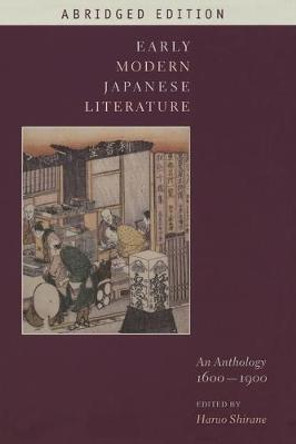Description
Elegant representations of nature and the four seasons populate a wide range of Japanese genres and media. In Japan and the Culture of the Four Seasons, Haruo Shirane shows how, when, and why this practice developed and explicates the richly encoded social, religious, and political meanings of this imagery. Shirane discusses a wide array of representations of nature in the Japanese arts: textual (poetry, chronicles, tales), cultivated (gardens, flower arrangement), material (kimonos, screens), performative (noh, festivals), and gastronomic (tea ceremony, food rituals). He reveals how this kind of "secondary nature," which flourished in Japan's urban environment, fostered and idealized a sense of harmony with the natural world just at the moment when nature began to recede from view. Illuminating the deeper meaning behind Japanese aesthetics and artifacts, Shirane also clarifies the use of natural and seasonal topics and the changes in their cultural associations and functions across history, genre, and community over more than a millennium. In this fascinating book, the four seasons are revealed to be as much a cultural construction as a reflection of the physical world.
About the Author
Haruo Shirane is Shincho Professor of Japanese Literature and Culture at Columbia University. He is the author and editor of numerous books on Japanese literature, including, most recently, The Demon at Agi Bridge and Other Japanese Tales; Envisioning The Tale of Genji: Media, Gender, and Cultural Production; Traditional Japanese Literature: An Anthology, Beginnings to 1600; Early Modern Japanese Literature: An Anthology, 1600-1900; Classical Japanese: A Grammar; and Traces of Dreams: Landscape, Cultural Memory, and the Poetry of Basho.
Reviews
Japan and the Culture of the Four Seasons provides a compelling account of how Japan has appropriated, interpreted, and valued nature over the centuries. Haruo Shirane's wide-ranging study tracks the culture of nature in Japan and especially the central role of waka in constructing a vision of nature that influenced all the arts. In its breadth, depth, and accessibility, his book is of great value not only to scholars and students of Japan but also to anyone interested in the intersections of art and nature. -- Andrew M. Watsky, Princeton University A tour de force. Haruo Shirane synthesizes the long and complicated encoding of flora, fauna, toponyms, and annual events of the Japanese landscape and calendar, untangling their synchronic connections and their historical development from the eighth to the nineteenth centuries, from the small cuckoo (hototogisu) as a harbinger of summer in the Kokinshu to the lovemaking of cats as a topic for comic haikai verse in the Edo period. Shirane's book is essential for anyone interested in virtually any genre of the traditional Japanese arts: poetry, costume, painting, noh theater, architecture, tea ceremony, flower arranging-or even Japanese sweets (wagashi)! -- Joshua Mostow, University of British Columbia 'Sensitivity to nature' is one of those commonplaces about Japanese tradition that, because of its all-too-easy association with cultural nationalism, tends to set many people's teeth on edge. This engaging and impressive study provides a welcome antidote. Drawing from literary, visual, historical, and religious sources, Haruo Shirane cuts through the cliches to uncover multiple, evolving, and sometimes surprising dimensions of the Japanese relationship with nature from early times to the present. -- Kate Wildman Nakai, professor emerita, Sophia University A comprehensive view of the subject, replete with fascinating detail, and full scholarly apparatus. -- David Burleigh Japan Times As accessible as it is erudite, this volume will appeal to those with interest in any aspect of the arts...Highly recommended. Choice A vital contribution to our understanding of the literature, art, and daily practices of Japan over the centuries. -- Elizabeth Oyler Monumenta Nipponica Japan and the Culture of the Four Seasons... enables us, for the first time in English, to gain a comprehensive, systematic, and authoritatively scholarly view on how very pervasive this seasons culture is and has been since the Nara and Heian periods. Japan Review Shirane is a reliable guide and reading this book will enrich one's understanding of almost any Japanese artifact. Journal of Japanese Studies
Awards
Winner of Choice Outstanding Academic Title 2012 and Yamagata Banto Prize 2019.
Book Information
ISBN 9780231152815
Author Haruo Shirane
Format Paperback
Page Count 336
Imprint Columbia University Press
Publisher Columbia University Press






